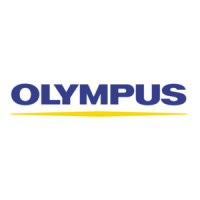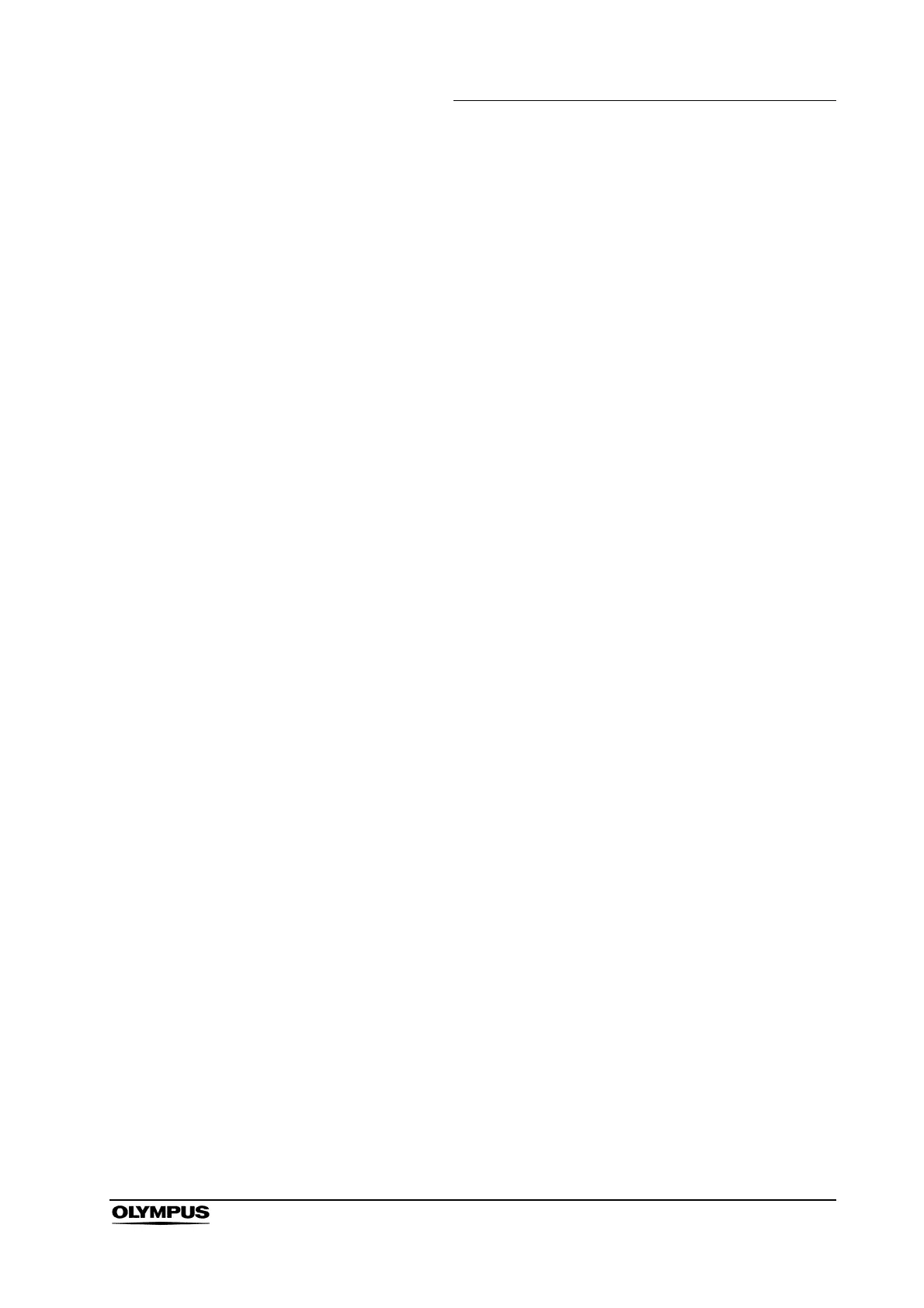Chapter 3 Cleaning, Disinfection and Sterilization Procedures
37
OSF-3 ENDOSCOPE REPROCESSING MANUAL
Removing the Endoscope and Cleaning Equipment From
Disinfectant Solution
1.
Remove the endoscope and cleaning equipment from disinfectant solution.
Attach the All-channel Irrigator to the Endoscope.
2. Remove the All-channel Irrigator’s Filter from disinfectant solution.
3. Attach the 30 cm
3
(30 ml) syringe to the All-channel Irrigator’s Main Body
and flush the Air/Water and Suction Channels with 150 cm
3
(150 ml) of air.
4. Disconnect the All-channel Irrigator from the Endoscope.
3.7 Rinsing After High Level Disinfection
Use water of appropriate microbiological quality. Once removed from
disinfectant solution, the instrument must be thoroughly rinsed with sterile water
to remove any disinfectant residue. If sterile water is not available, fresh potable
tap water or water which has been processed (e.g. filtered) to improve its
microbiological quality may be used along with 70% ethyl or isopropyl alcohol
rinse (see “If Non-sterile Water is Used” on page 38). Consult with your
hospital’s infection control committee.
Two rinse procedures are described below.
If Sterile Water is Used
1. Immerse the endoscope and flushing equipment in sterile water. Using a
clean, lint-free cloth, thoroughly rinse and wipe all external surfaces.
2. Inject sterile water into all channels according to the procedure described in
“Flushing the Detergent Solution From Channels” on page 34.
3. Use a sterile lint-free cloth to thoroughly wipe and dry the external surfaces
of the Endoscope, All-channel Irrigator.
4. Connect the All-channel Irrigator to the Endoscope. Using the 30 cm
3
(30 ml) syringe, flush 150 cm
3
(150 ml) of air through the Air/Water and
Suction Channel.
5. Disconnect the All-channel Irrigator.

